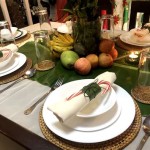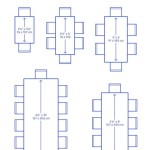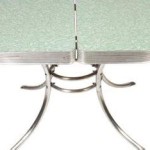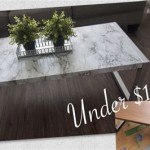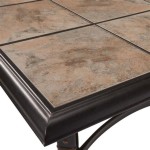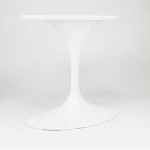Extending Dining Table Seats 10: A Comprehensive Guide
The need for a dining table capable of seating ten individuals typically arises from a desire to host larger gatherings, accommodating family meals, celebrations, and social events. Selecting an extending dining table that comfortably seats ten requires careful consideration of various factors, including room size, table mechanism, material, style, and overall functionality. This article provides a comprehensive guide to navigating the world of extending dining tables designed for larger groups.
Before delving into the specifics of extending dining tables, it is crucial to assess the available space. A table capable of seating ten demands a significant footprint, both in its compact and extended configurations. Measure the dining area accurately and account for ample space around the table for comfortable seating and ease of movement. Ideally, allow at least 36 inches (91 cm) between the edge of the table and any walls or furniture to permit guests to pull out chairs and navigate the room without obstruction. Consider the shape of the room as well; rectangular tables tend to work best in similarly shaped rooms, while round or oval tables might be more suitable for square spaces.
Understanding Extension Mechanisms
The extension mechanism is a critical component of any extending dining table. The design and construction of this mechanism directly impact the ease of use, stability, and overall lifespan of the table. Several types of extension mechanisms are commonly available:
Butterfly Leaf Extension: This type of extension features one or more leaves that are stored beneath the table's main surface. When required, the tabletop splits in the middle, allowing the leaf to be unfolded and locked into place. Butterfly leaf extensions often provide a seamless appearance and are relatively easy to operate. However, they might be limited in the amount of extension they offer, typically adding only one or two seating positions.
Drop Leaf Extension: Drop leaf tables have hinged leaves that can be raised and supported by brackets or legs. Drop leaf extensions are versatile and can be used to create a smaller dining surface when not fully extended. However, they might require more floor space when fully extended, as the leaves extend outwards from the sides of the table.
Self-Storing Leaf Extension: This mechanism allows for one or more leaves to be stored within the table itself, often in a compartment located beneath the tabletop. When needed, the leaves can be easily accessed and inserted into the table. This type of extension is convenient and prevents the need for separate storage of the leaves.
Removable Leaf Extension: Removable leaf extensions are separate pieces that are inserted into the table when required. These leaves are typically stored separately when not in use. While providing flexibility in terms of extension length, this type of mechanism requires dedicated storage space for the leaves. Care must be taken to ensure the leaves are properly aligned and secured to maintain a level surface.
Gear Extension: Gear extension mechanisms use a synchronized gear system to smoothly extend the table. Often seen in higher-end tables, these mechanisms offer a particularly seamless and effortless extension process. They are known for their durability and precise alignment of the tabletop segments.
When evaluating extension mechanisms, consider the smoothness of operation, the stability of the extended table, and the ease of storing the leaves (if applicable). A well-designed mechanism should allow for quick and effortless transitions between the compact and extended configurations.
Material Considerations for Longevity and Aesthetics
The material selection for an extending dining table is a significant factor influencing its durability, aesthetics, and overall cost. Common materials include solid wood, wood veneer, engineered wood, metal, and glass. Each material offers distinct characteristics:
Solid Wood: Solid wood is a durable and aesthetically pleasing material that adds warmth and elegance to any dining room. Hardwoods such as oak, maple, cherry, and walnut are particularly well-suited for dining tables due to their strength and resistance to wear and tear. Solid wood tables are often more expensive but can provide lasting value and can be refinished to maintain their appearance over time. They also expand and contract with humidity changes, which must be considered in the design.
Wood Veneer: Wood veneer consists of a thin layer of hardwood applied to a substrate, such as engineered wood. Veneer tables offer the appearance of solid wood at a lower cost. However, the quality of the veneer and the underlying substrate are important factors to consider. High-quality veneer can provide a durable and attractive surface, while lower-quality veneer might be susceptible to chipping or peeling.
Engineered Wood: Engineered wood, such as plywood or MDF (Medium-Density Fiberboard), is a cost-effective alternative to solid wood. Engineered wood is often more stable than solid wood and less prone to warping or cracking. However, it might not have the same aesthetic appeal or durability as solid wood. When selecting an engineered wood table, ensure that it is properly sealed and finished to protect it from moisture damage.
Metal: Metal frames and legs are often used in conjunction with wood or glass tabletops. Metal provides strength and stability to the table and can add a contemporary or industrial aesthetic. Stainless steel and powder-coated steel are common choices for dining tables due to their durability and resistance to rust. However, metal surfaces can be prone to scratching or denting.
Glass: Glass tabletops can create a modern and sophisticated look. Tempered glass is a common choice for dining tables due to its strength and resistance to shattering. However, glass surfaces can be prone to scratches and fingerprints and require frequent cleaning. Glass tables might also lack the warmth and natural feel of wood.
The choice of material should align with the overall design aesthetic of the dining room and the intended use of the table. Consider the durability, maintenance requirements, and cost when selecting the material for an extending dining table.
Style and Design Considerations
The style and design of the extending dining table should complement the existing décor of the dining room. A wide range of styles are available, from traditional to contemporary, and the choice should reflect personal preferences and the overall design theme. Consider the following design elements:
Table Shape: Rectangular tables are a classic choice for formal dining rooms and can accommodate a large number of guests. Round tables foster a more intimate and conversational atmosphere, while oval tables offer a compromise between the two. Square tables are less common for seating ten individuals due to their limited surface area.
Table Base: The table base can significantly impact the overall style of the table. Pedestal bases provide ample legroom and can create a more open feel. Four-legged tables offer stability and a traditional look. Trestle tables provide a rustic or farmhouse aesthetic. The design of the base should be visually appealing and structurally sound.
Edge Profile: The edge profile of the tabletop can add a subtle detail to the overall design. Common edge profiles include square, rounded, beveled, and ogee. The edge profile should be comfortable to the touch and visually appealing.
Finish: The finish of the table can significantly impact its appearance and durability. Common finishes include lacquer, varnish, oil, and wax. The finish should protect the table from scratches, stains, and moisture damage. Consider the sheen level of the finish, as a high-gloss finish can be more prone to showing fingerprints and scratches.
Chair Selection: Coordinating the dining table with the chairs is crucial for creating a cohesive and stylish dining space. Consider the height of the chairs in relation to the table, as well as the style and material of the chairs. Upholstered chairs can add comfort and elegance, while wooden chairs offer a more traditional look. Ensure that the chairs are sturdy and well-constructed to withstand frequent use.
When selecting an extending dining table and chairs, consider the overall proportions and scale of the furniture in relation to the dining room. A large table in a small room can feel overwhelming, while a small table in a large room might look out of place. Strive for a harmonious balance between the furniture and the surrounding space.
Beyond the core considerations of mechanism, material, and style, other factors should be carefully evaluated before making a purchase. The weight capacity of the extended table is essential. Ensuring that the table can safely support the weight of plates, serving dishes, and seated guests is paramount. Checking for the stability of the table in both its compact and extended forms is also crucial; a wobbly table can be both inconvenient and potentially hazardous. Finally, factoring in the ease of cleaning and maintenance is important, particularly if the table will be used frequently. Certain materials and finishes require specific cleaning products and techniques to maintain their appearance and longevity.

10 Seater Extending Dining Table Wooden Oak Ceramic

A Line 8 10 Seat Extendable Dining Table Oak Cult Furniture

Dining Tables Seating From Ten Up To Twenty People Oak Furniture

Sonoma 8 10 Seater Extending Dining Table M S

Sonoma 8 10 Seater Extending Dining Table M S

Timothy 200cm Extending To 300cm Oak Dining Table The Company

10 Seats Dining Tables Seater Round Square Next

Montreux 6 10 Seat Extendable Dining Table Walnut Cult Furniture

Large Extending Dining Table With Insert Leaf Seats 6 10 Black Pillar Pedestal Leg Wren

Extending Dining Table Oak White 6 10 Seater Impact Furniture
Related Posts

